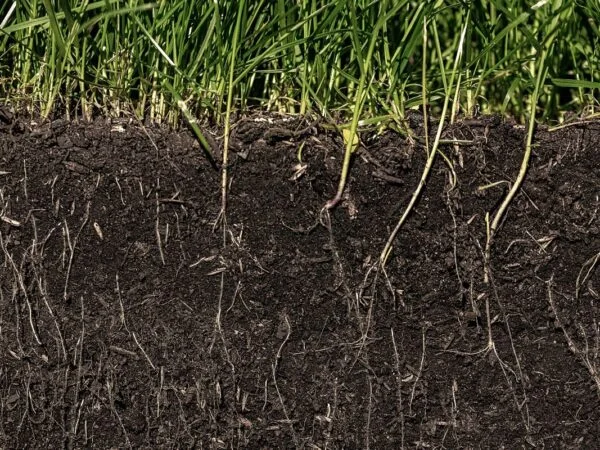Determining the best time to water grass seed is crucial for a thriving lawn. Timing can mean the difference between lush greenery and lackluster growth. Watering too early or late in the day could lead to evaporation or mold, while hitting that sweet spot ensures optimal absorption. By understanding the contrast between watering in the morning when temperatures are cooler versus midday heat, you can maximize your grass seed's potential for germination and root development. Let's delve into this essential aspect of lawn care, including how much water and sun are needed to help you achieve a vibrant and healthy yard.
Key Takeaways
-
Optimal Watering Times: Water your grass seed early in the morning or late in the afternoon to reduce water loss through evaporation.
-
Watering Frequency: Ensure consistent moisture by watering lightly multiple times a day, especially in hot and dry conditions.
-
Watering Techniques: Use a gentle spray or mist to avoid displacing seeds and promote even coverage.
-
Soil and Climate Impact: Understand your soil type and local climate to adjust watering schedules accordingly for optimal growth.
-
Preventing Water Loss: Mulch the area lightly to retain moisture and prevent rapid evaporation.
-
Monitoring Soil Moisture: Regularly check soil moisture levels to avoid overwatering or underwatering, which can hinder seed germination.
Optimal Watering Times
Morning Advantages
Water grass seed in the morning to benefit your lawn from cooler temperatures and lower wind speeds. Morning watering allows efficient water absorption by the soil before the day's heat sets in. This moisture helps prevent evaporation, ensuring proper hydration for the grass seed.
Evening Risks
Avoid watering grass seed in the evening to prevent prolonged moisture on the grass overnight. Evening watering can lead to fungal diseases due to excess moisture accumulation. It also increases the risk of mold growth and attracts pests to a wet lawn.
Midday Sun
Refrain from watering grass seed during midday sun to prevent rapid water evaporation. Midday watering may scorch tender grass seedlings due to intense heat and sunlight exposure. Watering under direct sunlight can cause water droplets to act as magnifying glasses, potentially burning the grass.
Watering Frequency
Seed Germination
Consistent moisture is vital for successful germination; water new grass seed multiple times daily. Proper post-seeding watering promotes quick, healthy grass seed germination. Monitoring soil moisture levels effectively supports the germination process.
Growth Phases
Adjust watering frequency throughout different growth phases of grass seeds, from germination to maturity. Transition from frequent watering for seedlings to less frequent but deeper watering for established grass. Tailoring schedules by growth stages enhances root development and overall lawn health.
Seasonal Adjustments
Modify watering routines based on seasonal changes like temperature shifts and rainfall patterns. Adapt water amounts during hot summers or rainy seasons to meet varying needs of the grass seed. Adjusting irrigation practices ensures optimal growth and survival throughout different seasons.
Watering Techniques
Sprinkler Types
- Choose appropriate sprinkler types like oscillating or pulsating for even grass seed coverage.
- Consider impact sprinklers for larger areas and rotor sprinklers for precise targeting.
- Selecting the right type ensures efficient water distribution across the lawn.
Soil Soaking
- Allow water to penetrate deeply into the soil, promoting root growth during watering.
- Deep soaking encourages roots to reach deeper for moisture, enhancing plant resilience.
- Proper saturation prevents shallow root development, improving drought tolerance.
Minimizing Runoff
- Adjust sprinkler settings to avoid excessive runoff, preventing water wastage and uneven watering.
- Create gentle slopes in the lawn to facilitate absorption and reduce runoff risks effectively.
Soil and Climate Impact
Soil Types
Grass seed watering should consider different soil types, such as sandy, loamy, or clay soils. Sandy soil drains quickly, requiring more frequent watering than clay soil to keep the seeds moist. In contrast, clay soil retains moisture better but may lead to waterlogging if overwatered.
Climate Variations
Consider the local climate when determining the best time to water grass seed. In hot and dry climates, watering in the early morning or late evening helps prevent evaporation. In cooler regions, mid-morning watering allows for optimal absorption by the soil.
Temperature Effects
Temperature plays a crucial role in determining the ideal time for watering grass seed. During hot weather, it's advisable to water more frequently but avoid overwatering to prevent seed rotting. Conversely, in colder temperatures, reduce watering frequency as excessive moisture can inhibit germination.
Grass Seed Types
Cool-Season Grass
Cool-season grasses, such as Kentucky Bluegrass and Fescue, thrive in cooler climates like the northern United States. These grasses germinate best when temperatures range from 60 to 75 degrees Fahrenheit. They are known for their ability to withstand frost and cold temperatures, making them ideal for regions with harsh winters.
When watering cool-season grass seed, it is crucial to keep the soil consistently moist but not waterlogged. Watering in the early morning helps prevent evaporation during hot afternoons. Overwatering can lead to fungal diseases, so it's essential to strike a balance.
Warm-Season Grass
Warm-season grasses, including Bermuda and Zoysia, are suited for hotter climates found in the southern United States. These grasses germinate best when temperatures range between 80 and 95 degrees Fahrenheit. They are drought-tolerant and thrive in full sun exposure.
For warm-season grass seed, watering is vital during establishment but should be done less frequently compared to cool-season varieties. It's recommended to water deeply but infrequently to encourage deep root growth and drought resistance. Avoid frequent light watering as it promotes shallow roots.
Preventing Water Loss
Evaporation Reduction
To prevent water loss through evaporation, it's crucial to water your grass seed early in the morning. This timing helps reduce much water being lost to the sun's heat. Consider using mulch on newly seeded areas to retain moisture and minimize evaporation.
Efficiently watering your grass seed involves utilizing irrigation methods that deliver water directly to the soil without wastage. Drip irrigation systems are highly efficient as they target the roots directly, reducing water loss through evaporation. Another effective method is using soaker hoses which release water slowly at ground level, promoting deep root growth for healthier grass.
Efficient Irrigation
Adjusting your sprinklers to ensure they are not spraying onto paved surfaces or areas where water isn't needed can significantly reduce unnecessary water usage. By focusing on directing the water only where it's required—on the grass seed—you can avoid wastage and promote optimal growth conditions. Moreover, installing rain sensors can help prevent over-irrigation by automatically shutting off sprinkler systems when sufficient rainfall has occurred.
The previous section discussed different types of grass seeds and their characteristics. Understanding these variations is essential when determining how much and when to water each type effectively.
Monitoring Soil Moisture
Manual Checks
Regularly checking the soil moisture level is crucial for ensuring adequate moisture for grass seed growth. Perform manual checks by inserting your finger into the soil up to the second knuckle. Feel if it's dry or moist, indicating whether watering is needed.
To accurately assess soil moisture, utilize a simple but effective tool - a screwdriver. Insert it into the ground; if it goes in smoothly, the soil is adequately moist. Conversely, resistance indicates dryness and signals the need for watering.
Tools and Gadgets
For more precise monitoring, consider investing in a moisture meter specifically designed for measuring soil moisture levels accurately. These gadgets provide instant readings without guesswork, ensuring optimal conditions for grass seed germination.
In addition to moisture meters, rain gauges are essential tools that help track rainfall amounts. This information aids in determining whether natural precipitation has provided sufficient moisture or if additional watering is necessary.
Adjusting Watering Based on Progress
Seedling Development
Grass seed requires consistent moisture for germination, especially during the critical seedling development stage. Ensure the soil remains damp but not soggy to support healthy growth. Overwatering can lead to issues such as root rot and hinder the seedlings' progress.
During seedling development, it's crucial to water your grass seed frequently, typically once or twice a day. Keep an eye on the soil moisture level by checking it regularly. The top layer should feel moist but not overly wet to avoid suffocating the developing seeds.
Signs of Overwatering
Signs of overwatering include water pooling on the surface, a foul smell coming from the soil, and mold growth. These indicators suggest excessive moisture levels that can harm your grass seedlings. Adjust your watering schedule if you notice any of these signs.
Overwatered grass seeds may struggle to establish strong roots due to oxygen deprivation in waterlogged soil. This can result in stunted growth and vulnerability to diseases and pests. By recognizing signs of overwatering early on, you can prevent these issues and promote healthier grass growth.
Lawn Care Maintenance
Fertilization Timing
Fertilizing your lawn at the right time is crucial for a healthy yard. For grass seed, the best practice is to apply fertilizer before planting, ensuring proper nutrients for growth. Early spring and fall are ideal times to fertilize, promoting strong root development and overall grass health.
Consider the type of grass you have in your yard. Cool-season grasses benefit from fertilization in early fall, helping them recover from summer stress. On the other hand, warm-season grasses thrive with fertilizer applications during late spring, supporting vigorous growth during hot summer months.
Mowing Guidelines
Maintaining the correct mowing height is essential for a lush and healthy lawn. Avoid cutting more than one-third of the grass blade length at once to prevent stressing the plants. This practice promotes deeper root growth, making your lawn more resilient against drought and pests.
To achieve optimal results when mowing, use sharp blades to ensure clean cuts that won't damage the grass. Mow when the grass is dry to prevent clumping and uneven cuts that can hinder healthy growth. Vary your mowing pattern each time you cut the lawn to avoid compacting soil in one direction.
Closing Thoughts
Frequently Asked Questions
When is the best time to water grass seed?
Early morning or late evening is ideal for watering grass seed. These times minimize evaporation and allow water to penetrate the soil effectively, promoting healthy growth.
How often should I water newly planted grass seed?
Water newly planted grass seed frequently but lightly to keep the soil consistently moist. Avoid overwatering as it can lead to issues like fungal growth and poor root development.
What are some effective watering techniques for grass seed?
Use a gentle spray nozzle or sprinkler system to evenly distribute water over the seeded area. Avoid heavy streams that can dislodge seeds or create puddles, ensuring optimal germination conditions.
How does soil type and climate impact watering needs for grass seed?
Sandy soils drain faster and may require more frequent watering, while clay soils retain moisture longer. Consider your local climate conditions when determining the appropriate watering schedule for your grass seed.
Why is monitoring soil moisture important when growing grass from seed?
Monitoring soil moisture levels helps prevent under or overwatering, both of which can hinder germination and establishment of new grass. Adjust your watering routine based on soil moisture readings to promote healthy growth.
Should I adjust my watering frequency based on how quickly my grass seed is growing?
Yes, adjusting your watering frequency based on how quickly the grass seed is growing is crucial. Be flexible with your watering schedule - increase if needed during hot/dry spells, decrease during cooler/wetter periods for optimal results in lawn care maintenance.
Image Source: Paid image from CANVA



